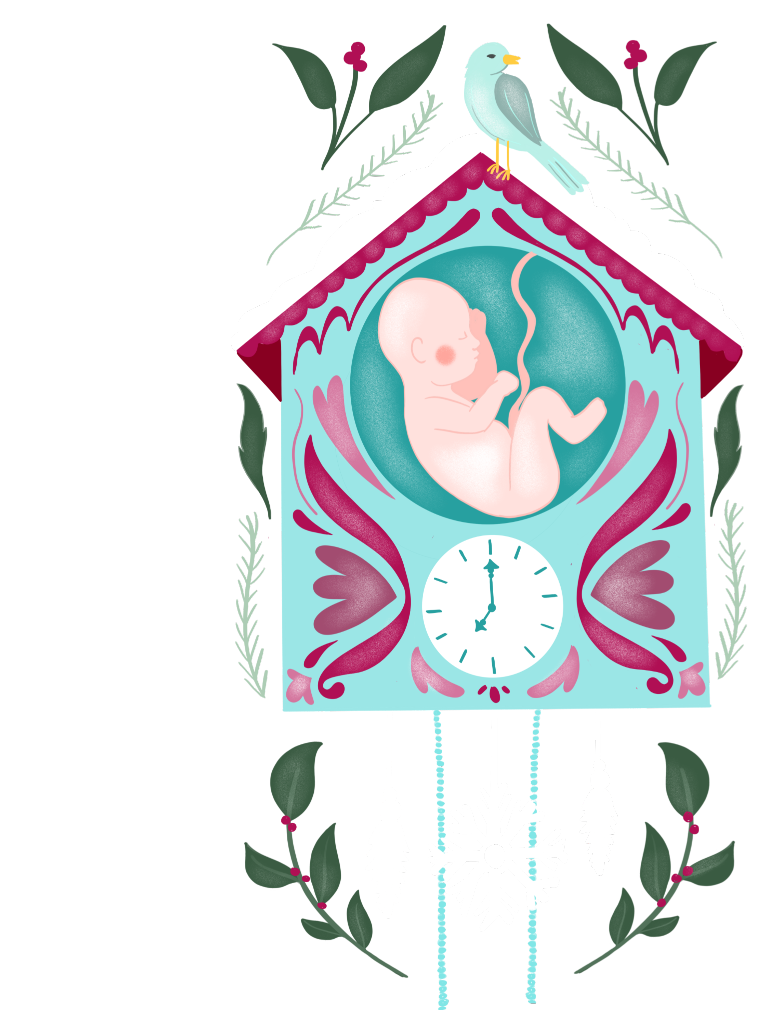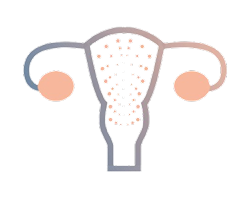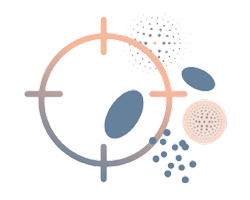
There can be various factors that influence the failure to conceive. A woman's fertility can be negatively affected by an unhealthy lifestyle - such as obesity, smoking or excessive alcohol consumption - as well as by too much pressure and stress. In addition, the age trend for wanting children is increasing, as the right time to start a family is important to many couples. At the same time, the role of the mother in society is changing. The media seem to find it normal to report on 40-year old women with their first child as if this were the natural age for being a young mother. However, at that age the chances of even the most fertile woman becoming pregnant each month are just 20%. With increasing age, fertility also declines and with it the possibility of becoming pregnant. At 40 years of age, only some 10% of egg cells are still fertile.
It is important that couples who have been unable to have a child make
their decision at the right time. They need to resolve to seek
professional help as soon as possible. A good fertility institute will
assess both partners and treat them as a single unit - as a third
patient if you like. Another criterion that determines the quality of
the assessment process is the time within which it is performed.
To make sure you have the child you are longing for, arrange a non-
binding initial consultation with us at the Kinderwunsch Institut.
If you do not use contraception for 12 months and even so do not
become pregnant, it is likely that there is a problem. However, this
only applies to patients who are 35 years of age or younger. In this
group, it is unusual if pregnancy does not occur within a period of 6
months without contraception. What’s fascinating is that there is a
mathematical inconsistency in the reasons why a pregnancy is not
achieved.
If there is non-compliance with the statistic rate of becoming
pregnant, in 50% of cases the problem is with the female, in 50% of
cases the problem is with the male and in 50% of cases both female and
male are involved. Failure to have a child is most frequently due to
infertility and there are various factors that influence this, such as
lifestyle, age and illnesses. Sadly, infertility is still treated as a
taboo subject and those affected can suffer from fear of failure,
stress and shame. Another problem is that infertility is often
detected very late and may stand in the way of fulfilling your wish
for a child.

The lifestyle of both partners can have an impact on their fertility and can impair it. If you are obese or even underweight, this can lower your chances of becoming pregnant just like excessive tobacco and alcohol consumption. Couples often resort to taking vitamins that are supposed to have a positive effect, but they often take the wrong doses of these, more than ever reducing the chances of becoming pregnant because the build-up of excess levels of these vitamins in the body can reduce fertility. The inability to become pregnant is a problem of a medical nature and the situation thus needs to be assessed by a professional as soon as possible.

In statistical terms, it can take roughly 5 months until the future arrival of offspring becomes apparent. Many put off having children until they have found the right partner or this is delayed by educational needs or the wish to pursue a career. Once a couple has decided the time is right to have a child, they often find themselves under stress because they want it to happen right away. This stress can influence and even prevent oocyte maturation in the woman. Successful couples and women, in particular, are accustomed to being in control of their lives and are disorientated by their failure to have a child. Their relationship may suffer as a result and perhaps outsiders and myths relating to pregnancy may exacerbate this.

Many women do not know their own menstrual cycle and are unaware that
the egg can only be fertilised during a few days of the ovulation phase. Methods such the measurement of the woman's body temperature or other
techniques for monitoring the cycle may help here. And even too frequent copulation can have the opposite effect to that intended. The quality of sperm may be impaired as the man's body could be unable to make up for the increased production necessary.

Other possible reasons for a failure to become pregnant are disorders involving the follicles or their growth, blocked fallopian tubes and mechanical problems in the uterus. Endometriosis is a condition that involves abnormal proliferation of the uterine lining that can cause haemorrhaging. Other symptoms associated with this condition are pain, cyst formation, inflammation and tissue adhesions.
Polycystic ovary syndrome (PCOS) is caused by a hormonal imbalance. The levels of testosterone are elevated, disrupting the associated cycle and fertility of the woman. Inflammations of the abdomen can result in blockage of the fallopian tubes.

In addition to observing a healthy lifestyle and regularly visiting
your gynaecologist, you should not put off your wish to have a child
for too long. If you are unsure, you'll find that a fertility test
will give you assurance and will be able to tell you with considerable
accuracy how long you will remain fertile. If you still fail to become
pregnant, it is highly advisable for you to find out why.
If you have used oral contraceptives in the past, this can also
temporarily impair your fertility. You should also seek professional
help if you have suffered a miscarriage or an ectopic pregnancy. In
some 1% of women, the failure to become pregnant can be due to
premature and early menopause before they reach the age of 35 years.
In this case, an egg donation may be the remedy.

In cases of infertility in men, the underlying cause is usually poor quality of their sperm. There are three factors that determine the quality of sperm. Either the sperm count is low, the spermatozoa are inadequately mobile and/or the spermatozoa are deformed.
Deformed or immobile spermatozoa can only reach an egg with difficulty or not at all. The number of spermatozoa produced also plays a role in this context. Usually there are some 20 million spermatozoa present in each ml of ejaculate. If less than 30% are normally formed and 50% are more or less immobile, the man can be considered sterile.
If the pregnancy attempts fail, we use molecular methods to investigate the causes, determine the optimal conditions
and maximise your chances of a successful pregnancy. An endometrial biopsy is carried out for the analysis.
This involves inserting a fine cannula into the uterus to take a small tissue sample.
This is sufficient to analyse the following three tests simultaneously and without any risk.



The ERA test
After five days of progesterone administration, the "Endometrial Receptivity Array" determines whether the uterine lining is optimally prepared for embryo implantation. This allows the embryo transfer to take place at the best possible time, which increases the chances of success of the in-vitro treatment. In three out of ten patients, the so-called implantation window is shifted - current randomised multicentre studies confirm that personalised embryo transfer in the implantation window is superior to conventional frozen embryo transfer and 71% of women give birth within a year.
The EMMA-test
Emma stands for "Endometrial Microbiome Metagenomic Analysis" and evaluates a comprehensive profile of the bacterial DNA found in the lining of the uterus - also known as the endometrium - where the embryo is implanted later. These are closely linked to the success of the pregnancy. The test is carried out after five days of progesterone administration or between the 15th and 25th day of the cycle. It is important that patients do not take any antibiotics in the three months prior to the biopsy.
The ALICE-test
The "Analysis of Infectious Chronic Endometritis" test aims to identify bacteria that cause chronic inflammation of the uterine lining and are associated with infertility and gynaecological complications - also known as "chronic endometritis". The test is carried out after five days of progesterone administration or between the 15th and 25th day of the cycle. It is important that patients do not take any antibiotics in the three months prior to the biopsy.
EMBRACE
EMBRACE is the name of the embryonic, cell-free DNA test that does not require an embryo biopsy. Embryos resulting from IVF treatment
naturally release DNA into the culture medium during their development in the laboratory. The released DNA in the fluid is analysed
for the correct number of chromosomes and helps to decide which embryo should be transferred first.
The analysis procedure therefore increases the chances of a successful pregnancy while the embryo is not touched.
Why are we not getting pregnant? A commonly underappreciated factor is age, particularly that of the woman. Therefore, early provision and examination is crucial when it comes to planning a family. By means of targeted and extensive dissemination of information, we hope to be able to reach the couples that are affected by this problem at an early stage, i.e. by the age of 32 years. A simple fertility test will show the extent of the remaining ovarian egg reserve in the woman and how long she can expect to be fertile. This provides reassurance and if necessary, treatments can be initiated at an early stage.
The basic principle here is that the earlier we can start, the less complicated will be the treatments required and the greater is the chance of becoming pregnant.
The examination and diagnosis phase will be carefully organised by us to suit the needs of each partner. This means that we offer appointments outside of your work hours, we perform blood sampling at the institute and that appointments with other institutions can also be coordinated by us. Many influencing factors can reduce fertility in couples. The cause of the unfulfilled desire to have a child can usually be treated quickly at the Kinderwunsch Institut with the appropriate therapy.